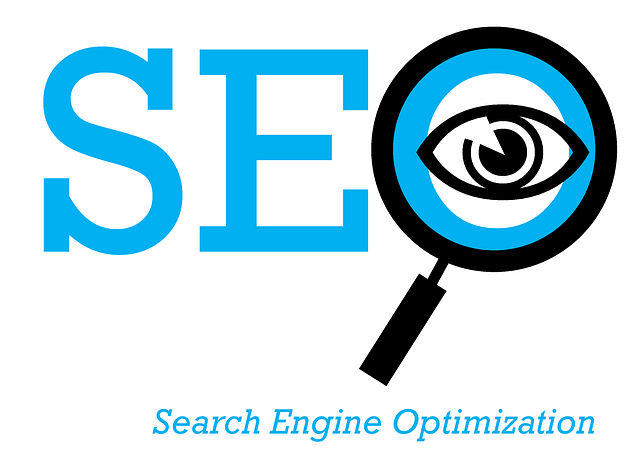Search Engine Optimization (SEO) offers numerous benefits for user experience (UX), driving targeted traffic, improving loading times, mobile responsiveness, and navigation. SEO analytics provide insights into user behavior, enabling content tailoring. Positive UX fueled by SEO leads to higher user retention, reduced bounce rates, and improved website performance. By enhancing search rankings, attracting target audiences, and creating relevant content, SEO boosts engagement, increases conversions, and strengthens online reputation. Focusing on mobile optimization, site speed, keyword intent, and user-centric KPIs ensures long-term success in driving meaningful interactions and conversions.
In today’s digital landscape, Search Engine Optimization (SEO) isn’t just about ranking higher; it’s a cornerstone of enhancing user experience (UX). This article explores the multifaceted benefits of SEO for UX, delving into its role in improving engagement, driving organic traffic, optimizing for mobile devices, enhancing site speed, and understanding user intent through keyword research. By focusing on these strategies, businesses can create seamless, intuitive online experiences that keep users coming back.
Understanding SEO's Role in UX Enhancement

Search Engine Optimization (SEO) plays a pivotal role in enhancing User Experience (UX). By optimizing websites for search engines, businesses can drive targeted traffic and ensure that their online presence meets user needs. The benefits of SEO extend far beyond mere visibility; they directly impact key UX metrics. For instance, effective SEO strategies lead to faster loading times, better mobile responsiveness, and intuitive navigation—all factors that contribute to higher user satisfaction and engagement.
Moreover, SEO helps in understanding user behavior and preferences through analytics. By analyzing search queries and user interactions, businesses can tailor their content and design to meet specific expectations. This not only improves UX but also drives conversions by providing relevant, valuable information at the right time. Ultimately, a positive UX fueled by SEO results in increased user retention, higher bounce rates, and better overall performance for the website.
How SEO Improves User Engagement

Search Engine Optimization (SEO) significantly enhances user engagement by optimizing websites for search engines and visitors alike. When a website ranks higher in search results, it becomes more visible to potential users, leading to increased organic traffic. Higher visibility not only attracts more visitors but also improves credibility and trustworthiness, as users tend to perceive top-ranking sites as more reliable.
Moreover, SEO focuses on creating content that is relevant, informative, and user-friendly, aligning perfectly with the intent behind user search queries. By understanding user behavior and tailoring content accordingly, SEO ensures that visitors find what they’re looking for swiftly and efficiently. This positive user experience translates into longer session durations, lower bounce rates, and higher conversion probabilities, ultimately making SEO a powerful tool to foster meaningful interactions and conversions.
Driving Organic Traffic: The SEO Advantage

Search Engine Optimization (SEO) serves as a powerful tool for driving organic traffic, offering numerous benefits that extend far beyond mere visibility on search engine results pages. By optimizing websites with relevant keywords, high-quality content, and structured data, SEO attracts users who actively seek information related to a brand’s offerings. This targeted approach ensures that the right audience stumbles upon a business, fostering a more meaningful connection between consumer and provider.
Moreover, effective SEO enhances user experience by improving website navigation, loading speeds, and mobile responsiveness. When a site ranks highly for relevant queries, users are more likely to engage with it, spending more time on the page and interacting with its content. This increased engagement signals to search engines that the site provides valuable information, reinforcing its position in organic rankings over time.
Optimizing for Mobile: A Key Focus

In today’s mobile-first world, optimizing websites for various devices is no longer a luxury but an essential requirement. Mobile users account for a significant portion of total web traffic, and search engines prioritize delivering relevant, fast-loading mobile experiences. Therefore, focusing on SEO for enhanced user experience means ensuring your site is mobile-friendly and performs well across all screens.
This involves optimizing page load times, improving navigation with touch-friendly interfaces, and guaranteeing responsive design that adapts to different device sizes. By doing so, you enhance user satisfaction, reduce bounce rates, and tap into the full potential of the benefits of search engine optimization. A well-optimized mobile experience not only boosts your site’s rankings but also encourages users to engage longer, increasing the likelihood of conversions and a positive online reputation.
Enhancing Site Speed for Better UX

Improving site speed is a key aspect of SEO that directly impacts user experience. Faster loading pages lead to reduced bounce rates, increased time on page, and improved conversion rates. Search engines like Google prioritize sites with high performance, ranking them higher in search results. This, in turn, brings more organic traffic and enhances the overall online visibility of the brand.
Optimizing images, leveraging browser caching, and reducing HTTP requests are effective strategies to speed up a website. Additionally, content delivery networks (CDNs) can distribute content globally, ensuring users from different regions access fast-loading pages. Such improvements contribute to a seamless user journey, fostering customer satisfaction and encouraging repeat visits, which are all integral benefits of Search Engine Optimization.
Keyword Research: Unlocking User Intent

Keyword research is a vital step in SEO that goes beyond simply identifying popular search terms. It involves delving into user intent, understanding what information or solutions searchers are seeking. By aligning content with this intent, websites can offer relevant and valuable answers to their audience’s questions. This strategy not only enhances user satisfaction but also drives engagement and fosters a positive experience.
The benefits of SEO extend beyond improved visibility on search engines. It allows businesses to connect with their target audience by creating content that resonates with their needs. When keywords are chosen based on user intent, the website becomes a trusted resource, encouraging longer visits, lower bounce rates, and increased conversions. This, in turn, boosts overall online performance and contributes to long-term success in today’s digital landscape.
Measuring SEO Success: User-Centric Metrics

Measuring the success of Search Engine Optimization (SEO) strategies has evolved beyond traditional rank and traffic metrics. In today’s user-centric digital landscape, focusing on key performance indicators (KPIs) that reflect user experience is vital to achieving long-term success. By adopting a user-first approach, marketers can gain deeper insights into how their SEO efforts impact customer satisfaction and behavior.
Benefits of Search Engine Optimization extend beyond mere visibility; they contribute to enhanced user engagement, reduced bounce rates, and increased time spent on site. Metrics like average session duration, pages per session, and conversion rates offer valuable signals of successful SEO implementation. These user-centric metrics provide actionable data that allows for continuous optimization, ensuring the website delivers a relevant and satisfying experience to its visitors.
